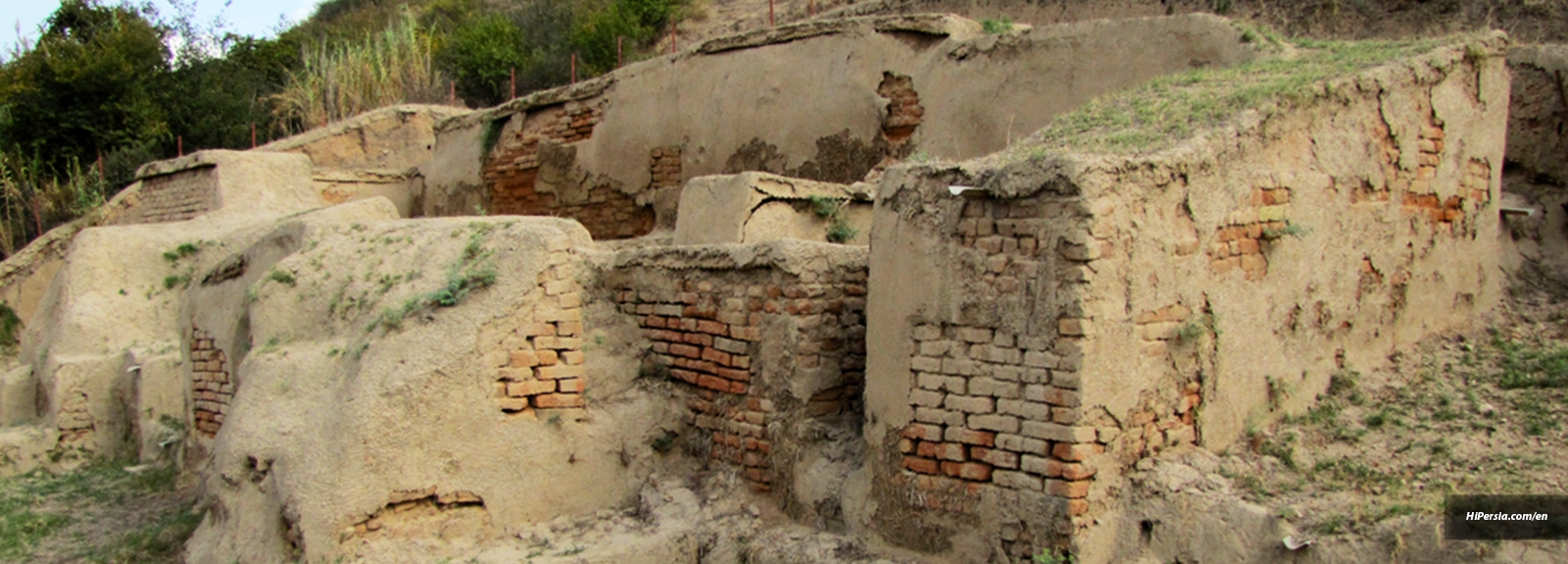



The Gorgan wall, also known as the Red Snake, has been drawn from the Caspian Sea to the Caucasus Mountains to prevent the invasion of the invaders. The wall is the world's largest defensive wall.
The wall of Gorgan is a wall with an area of approximately 200 km. Unfortunately, much of this wall has been damaged over the years. In the area of the Adib valley, a four-arcade building with an area of 180 meters discovered that is the only building with all its brick walls coming out of the ground. This wall is made of bricks and is therefore also called a red snake. This wall has a water supply system except the defensive dam. A massive amount of bricks has been used in this wall, which has been used by the brick factory. These furnaces built at a distance of approximately 50 meters, which illustrates the intelligence of Iranian architects.

Before the construction of the Gorgan wall and during the reign of King Pishdadi, Iran and Turan were fighting with each other. At that time, Afrasiab had besieged the Iranian army in Mazandaran. Finally, Manuchehr Pishdadi proposes a compromise, and the Turanians accept the offer of reconciliation. and in order to accept this proposal, to humiliate the Iranians, Turanians suggest that one of the Iranian champions should throw over the Alborz, and the place of the fall, the border between Iran and Turan, should be known. Arash volunteers among the Iranians and goes over the Alborz mountain and throws an arrow. After shooting, he dies, and his arrow flies from morning to evening and falls on the ground next to the Jeihoon River.

The remains of the ashes of the furnaces show that the wall belonged to the middle of the fifth century or the sixth century. Thus, the Gorgan wall was built on the orders of the Sassanid kings. In that era, Iran faced two main enemies. On the one hand, the Eastern Roman Empire, on the other hand, the Hun tribe, made the decision to attack Iran. The Iranians designed and built the Great Wall of Gorgan to protect the fertile plain of Gorgan and prevent the looting of its valuable products. There were approximately 38 garrisons along this widespread wall, estimated at which nearly 30,000 soldiers holding this defensive wall.

There is a moat in front of the wall, which is 5 meters deep and 10 miles long, making it easier to defend. The remains of the Cargaz dam and the irrigation canals indicate that famous work has been done on the irrigation into the moat and other uses, such as water supply for the production of bricks or the use of soldiers, and so on. It can be said first to install a water supply network and then construct the wall.
To visit this magnificent wall, the seasons of spring and autumn are the best times. The areais covered in spring with blooms and spring flowers, and in the fall, nature turns into a thousand colors.
If you want to go to this area with your private car, first take about 535 kilometers from Tehran towards Firuzkouh, Sari, Gorgan, Azadshahr, and Minoodasht, and finally move to Kelaleh. Then you must go to Azizabad. It is 40 minutes to get from Kelaleh to Aziz Abad that In this way, you will go through Qarajeh, Kowli-ye Banador, and Kaser-e Pishkamar.
But if you want to go to this area with public transport, every day and on a regular basis, buses from Tehran terminals go to Kalaleh, Gonbad-Kavoos, Azadshahr, and Gorgan. You can also go by train or airplane to Gorgan, and then go there by taxi.






“Oh! Squander not this breath that Heaven hath lent thee, Nor make too sure another breath to borrow!’” Khayam